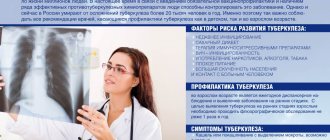Full text of the article:
Viral hepatitis A is a serious infectious disease that affects liver cells and disrupts its function. Mostly children suffer from viral hepatitis A, especially those who often neglect the rules of hygiene.
Viral hepatitis A is called the “disease of dirty hands” because it is transmitted mainly by water, food or household contact. A child can become infected through contaminated food, water or objects.
Symptoms
Viral hepatitis A can have a very long incubation period. The disease can manifest itself within a week after infection, but sometimes the first signs of the disease appear only after a month and a half, so the source of the infection may not be detectable. The disease can occur in mild or severe forms. The onset is usually acute. The patient's temperature rises (up to 38-39 °C), headache, and loss of appetite. The person feels weak, nauseous, and may vomit. These symptoms are similar to the flu, so sometimes viral hepatitis A is treated incorrectly at home.
But there are also specific signs of disease, for example, yellowing of the whites of the eyes, darkening of urine and discoloration of stool. On days 5-7 after the onset of the disease, an infected person develops yellowness of the skin and mucous membranes. Although an anicteric form of the disease is also possible, it, by the way, is more common and is characterized not only by the absence of yellowing of the skin, but also by weaker manifestations of the other clinical symptoms of viral hepatitis A. However, even a mild form of the disease is dangerous.
Viral hepatitis A provokes the death of liver cells and spreads to the bile ducts. Recovery occurs slowly, the person continues to feel unusual lethargy and apathy for a long time, and cannot work fully. You cannot cure the disease on your own; at the first sign of infection, you must seek medical help.
General information
Hepatitis A is a liver disease caused by the hepatitis A virus. The hepatitis A virus is distinguished by record resistance to external influences: boiling - inactivation of the virus occurs only after 5 minutes. Chlorine – 30 min. Formalin – 72 hours. 20% ethyl alcohol is not inactivated. Acidic environment (pH 3.0) – does not inactivate, survival in water (temperature 20°C) – 3 days.
The hepatitis A virus is spread primarily when an uninfected (or unvaccinated) person consumes food or water contaminated with feces from an infected person. The virus can also be transmitted through close physical contact with an infected person, but hepatitis is not transmitted through casual contact between people. The disease is closely linked to a lack of safe water, inadequate sanitation and poor personal hygiene. The sources of the virus are sick people.
The disease can cause significant economic and social impacts in individual communities. It can take weeks or months for people to get healthy enough to return to work, school and everyday life.
Personal hygiene
The simplest, most accessible and important means of preventing viral hepatitis A is personal hygiene. We have known the basic rules since childhood: you should always wash your hands before eating and after using the toilet, drink only boiled or bottled water, eat well-cooked food, do not forget to wash vegetables and fruits, avoid swimming in prohibited places, do not touch your face with dirty hands and mucous membranes. If you live in a region with a high incidence of viral hepatitis A or plan to travel to such regions, then get vaccinated.
Viral hepatitis A: modern clinical features, diagnosis and prevention
Viral hepatitis A (HA) has traditionally been considered primarily a childhood, mild, benign, self-limiting disease and therefore has not attracted much attention from either clinicians or scientists. However, in recent years, new data has emerged, prompting a reconsideration of some provisions that previously seemed unshakable. In particular, in Russia the incidence of GA in adults exceeds that in children; the disease does not always proceed “smoothly”; Russian doctors know about the possibility of death from GA not only from foreign literature, but also from their own experience.
HA is one of the most common human diseases on earth; about 1.4 million cases are registered annually in the world [5]. And in Russia, the incidence of GA remains high to this day; in the general structure of acute viral hepatitis it accounts for more than 50%. In terms of economic costs, HA ranks 5th in Russia among all registered infections. It is not surprising that in recent years GA has attracted the attention of both practicing doctors of various specialties (infectious disease specialists, pediatricians, gastroenterologists, therapists) and representatives of medical science. In June 2010, the All-Russian Scientific and Practical Conference was held in Moscow, at which modern aspects of epidemiology, clinical manifestations, specific laboratory diagnostics and prevention of hepatitis A were summarized [1].
The causative agent of hepatitis A is a virus (HAV, Hepatitis A virus, HAV), first identified by Finestone and co-authors in 1973; is hepatotropic, has a weak cytopathogenic effect on liver cells. HAV is one of the most resistant human viruses to environmental factors; it can survive for a long time in water, food products, wastewater, and on various environmental objects [2, 6].
Epidemiology. HA is a classic anthroponosis; the only source (reservoir) of the infectious agent is humans. The virus is isolated by patients with various forms of the disease, including the most common (especially in children): anicteric and erased, which are usually not diagnosed; accordingly, patients with these forms are not hospitalized, lead an active lifestyle and can infect others. From patients with the icteric form, the virus is excreted in feces most intensively at the end of the incubation and during the pre-icteric periods, i.e., also before recognition of GA. With the appearance of jaundice in most cases, the infectiousness of patients is significantly reduced. It is this feature—the most active release of the virus from the patient’s body before the appearance of jaundice, combined with the high resistance of HAV in the external environment—that causes the widespread spread of hepatitis A. The HA virus is highly infective; only a few viral particles are enough to become infected with hepatitis A [7–9].
GA is a typical intestinal infection with a fecal-oral transmission mechanism. Routes of transmission: water, food and household. Transmission factors, as with all intestinal infections, are various food products (including seafood, frozen vegetables and fruits) that are not heat-treated, as well as water and dirty hands. Large outbreaks of GA are associated with fecal contamination of water bodies or wastewater entering the water supply network. In children's groups, the contact and household route of transmission through dirty hands and various household items is of great importance: toys, dishes, linen, etc. Water and food outbreaks have been repeatedly recorded in Russia (including in Moscow, St. Petersburg, Nizhny Novgorod , Tver region) in 2005–2010. [1].
Human susceptibility to hepatitis A is universal. In regions with widespread distribution of the HA virus (countries of Africa, Southeast Asia, Latin America), most cases of infection occur in young children [8, 11].
In developed countries, the first encounter with the HA virus may occur in adolescence or later. The risk of infection is especially high when traveling to hot countries (tourism, travel) with water shortages, poor sewerage and water supply systems, and low levels of hygiene of the local population. It is no coincidence that HA is called a traveler's disease. The development of mass tourism and visits to regions of the world endemic for GA pose an increased risk of infection for Russians. Mass migration also contributes to the active circulation of HAV in Russia.
In Russia, GA was previously predominantly a childhood infection, but in recent years, due to a number of reasons (declining birth rates, a decrease in the number of children attending preschool institutions, etc.), the incidence of GA has shifted to older age groups.
Immunity after hepatitis A is strong and long-lasting, almost lifelong.
Clinic. The duration of the incubation period ranges from 7 to 50 days, averaging about one month.
The clinical classification of HA provides for the identification of several variants: icteric, anicteric, erased and subclinical (inapparent).
The classic, although not the most common, is the icteric variant of GA, which occurs cyclically, in which the incubation period is followed by the pre-icteric one. The disease usually begins acutely with an increase in body temperature to 38–39 ° C, symptoms of intoxication (headache, dizziness, unexplained weakness, weakness, aches in muscles, bones, joints, etc.) and dyspeptic syndrome (decreased appetite, nausea, bitterness in the mouth). mouth, belching, vomiting, heaviness in the epigastric region and right hypochondrium, delayed or loose stool). At the same time or earlier than dyspeptic symptoms, mild catarrhal symptoms sometimes appear in the upper respiratory tract (sore throat, slight pain when swallowing, etc.), which is often the basis for the erroneous diagnosis of “ARD” [9, 10]. Children may have intense abdominal pain, simulating acute appendicitis, biliary colic; This is not typical for adults.
At the end of the pre-icteric period, which most often lasts from three to seven days (with fluctuations from two to 14), the urine becomes dark yellow and the feces become lightened. However, these symptoms, which are very important for the timely diagnosis of hepatitis A, are not always noticed by patients.
In children, already in the pre-icteric period, liver enlargement can be detected.
In the blood serum of patients with HA in the pre-icteric period, the activity of aminotransferases - ALT and AST - increases significantly (10 times or more), and the content of urobilin in the urine increases. After 3–5 days from the onset of the disease, body temperature usually normalizes, but icterus appears—first in the sclera, then in the skin. The icteric period begins. However, in 2–5% of cases, the symptoms of the pre-icteric period described above are not detected, and then GA begins with a change in the color of stool and icteric staining of the sclera.
Usually, with the appearance of jaundice, the patient’s well-being begins to improve quite quickly, body temperature normalizes, and the symptoms of the pre-jaundice period disappear. Weakness and loss of appetite persist longer than others. In recent years, often in patients with HA, against the background of emerging jaundice, fever continues and symptoms of intoxication increase; This usually happens in patients with chronic alcohol intoxication or drug addiction.
Jaundice with GA increases quickly, usually reaching a maximum in 3–5 days, in the next 5–10 days it remains at the same level, and then its intensity decreases. On average, the duration of the icteric period is about two weeks. Upon examination, an enlarged liver is revealed, which is compacted, with a rounded edge, and is sensitive to palpation; An enlarged spleen is observed in 10–15% of cases, more often in children. At the height of jaundice, bradycardia is characteristic.
As the intensity of jaundice decreases, the color of stool and urine normalizes, and the size of the liver gradually decreases.
In the icteric period, pronounced hyperenzymemia persists with a predominant increase in ALT activity compared to AST (accordingly, the de Ritis coefficient is always less than 1). Hyperbilirubinemia is usually moderate and short-lived, caused predominantly by the bound fraction of bilirubin. A significant increase in the thymol test is characteristic.
The hemogram shows normocytosis or leukopenia, relative lymphocytosis; ESR is normal.
The period of convalescence is usually characterized by a fairly rapid disappearance of clinical and biochemical signs of viral hepatitis, in particular hyperbilirubinemia. Later, ALT and AST activity levels return to normal; An increase in the thymol test can persist for a long time, for several months. The state of health of those who have recovered from GA is usually satisfactory; fatigue after physical activity, discomfort in the abdomen after eating are possible, and sometimes a slight enlargement of the liver persists. The duration of this period in most cases does not exceed three months.
In some cases, the period of convalescence can last up to 6–8 months or more, exacerbations (enzymatic or clinical) are possible, as well as (in 3–20%) relapses. The latter usually occur in people 20–40 years old 1–3 months after the main wave and, as a rule, are milder than the first wave of the disease. However, relapses with acute renal failure and death have been described.
The icteric variant of HA described above most often occurs in mild or moderate forms. A severe form of HA occurs in no more than 1% of patients, mainly in people over 40 years of age, in patients with chronic alcohol intoxication or drug addiction, chronic viral hepatitis of other etiologies (B, D, C). Among children, a severe form of HA is recorded during puberty, as well as against the background of obesity and a burdened allergic history.
The fulminant form of HA with the development of acute liver failure and encephalopathy is rare, occurring in 0.1–1% of all cases.
Sometimes, especially in older age groups, HA is accompanied by a pronounced cholestatic component, while the icteric period is extended to several months, the intensity of jaundice is great, the disease is accompanied by itching of the skin, and the activity of alkaline phosphatase in the blood serum significantly increases [3, 6].
Cholestasis syndrome is also characteristic of HA with an autoimmune component, combined in this case with other systemic immune disorders, such as vasculitis, nephritis, polyarthralgia, purpura, acute hemolytic anemia, fever, etc. Cryoglobulins and rheumatoid factor appear in the blood serum, and CEC levels are increased , the gamma globulin fraction of the protein spectrum, autoantibodies can be detected (in particular, to smooth muscle).
The anicteric variant is characterized by the same clinical and laboratory signs as the icteric variant, however, the absence of one of the most noticeable manifestations of hepatitis - jaundice and, accordingly, hyperbilirubinemia, makes diagnosis difficult. The clinical symptoms of the anicteric variant correspond to the manifestations of the pre-icteric period of the classic icteric variant. A short-term increase in body temperature, dyspeptic symptoms, weakness, catarrhal syndrome, etc. are possible for 3–5 days. The liver enlarges and becomes slightly painful on palpation, and the urine may darken. Hyperfermentemia is detected, ALT and AST levels increase almost as significantly as in the icteric form, and the thymol test indicator increases.
The anicteric variant develops tens of times more often than the icteric variant, but is rarely recorded, usually only during a targeted examination of children's groups and in epidemic foci of GA. The younger the child, the greater the likelihood of the anicteric variant of HA; In adolescents and adults, jaundice predominates.
The erased variant is manifested by minimal and quickly passing clinical symptoms (including jaundice) in combination with hyperfermentemia and an increased thymol test.
In the subclinical (inapparent) variant, in contrast to the anicteric and erased variant, the well-being of the sick is not disturbed, the liver does not enlarge, jaundice does not appear, but the activity levels of ALT and AST are increased, and specific markers of GA are determined in the blood serum.
In recent years, Russia has seen an increase in the incidence of not only hepatitis A, but also viral hepatitis of other etiologies (primarily B and C), as well as HIV infection. The consequence is an increase in cases of hepatitis of mixed etiology, differing in course and outcome from monoinfection caused by HAV. In particular, in one of the first works devoted to the characteristics of HA in people with viral hepatitis C (HCV infection), it was noted that wave-like hyperfermentemia in convalescents of HA with HCV is observed in 68% of cases within 6 months and in 41% up to a year. On the other hand, during co-infection with HAV and HCV, a competitive interaction of viruses was revealed, which leads to a temporary suppression of HCV replication.
HA against the background of chronic infection with the hepatitis B virus is characterized by a prolonged course and persistent residual effects. In HIV-infected patients, the acute period of HA does not have any remarkable features, but there has been a report of long-term persistence of HAV RNA in the blood and hyperfermentemia for more than three months in an HIV-seropositive patient.
HA and chronic alcohol intoxication have a mutually aggravating effect. With this combination, fever can last more than two weeks against the background of jaundice, often a combination of clinical signs of HA and alcohol withdrawal syndrome, up to meta-alcohol psychosis; Decompensation of alcoholic liver disease often develops, and death is possible, which is confirmed by our observations.
Complications for hepatitis A are not typical; the most severe of them, hepatic coma, is extremely rare. Among possible complications, one should keep in mind functional and inflammatory diseases of the biliary tract. Acute renal failure and hemolytic-uremic syndrome associated with HAV infection have also been described. In our clinic, we observed an 18-year-old patient whose HA was complicated by massive intravascular hemolysis, acute renal failure, and disseminated intravascular coagulation syndrome; death occurred, the immediate cause of which was massive pulmonary hemorrhage. Individuals with impaired T-suppressor function during and/or after HA may develop type 1 autoimmune hepatitis.
A lethal outcome from HA is extremely rare, but is nevertheless possible in older age groups and patients with previous liver diseases (alcoholic liver disease, chronic hepatitis of various etiologies). The cause of death may be cerebral edema in patients with acute liver failure.
Thus, the main features of modern hepatitis A are:
- an increase in the proportion of sick adults, including older age groups;
- frequent combination with chronic alcohol intoxication, chronic hepatitis B and C, HIV infection;
- the presence of cholestatic syndrome and an autoimmune component;
- more frequent development of moderate, severe and fulminant forms;
- tendency to a protracted course with exacerbations and relapses.
Diagnostics. The diagnosis of hepatitis A is established taking into account clinical, epidemiological and laboratory data. The basis for the assumption of GA are:
- acute onset of the disease with high body temperature, dyspeptic and asthenovegetative phenomena;
- short pre-icteric period;
- liver enlargement;
- improvement of well-being, normalization of temperature when jaundice appears;
- hyperenzymemia (ALT, AST) with a de Ritis coefficient less than 1;
- hyperbilirubinemia (mainly due to the bound fraction);
- high thymol test;
- an indication of contact with a patient(s) with jaundice 7–50 days before illness or consumption of raw water from random sources, unwashed vegetables and fruits, etc.; cases of GA in the community, the area where the patient was located during the period corresponding to the incubation period, travel to the countries of Africa, Asia, Latin America.
A specific marker of HA are antibodies (immunoglobulins) to the hepatitis A virus class M (anti-HAV or anti-HAV IgM), detected by enzyme-linked immunosorbent assay (ELISA) in the blood serum from the first days of the disease and then for 3-6 months. These antibodies (“early”) are produced in all patients with GA, regardless of the clinical variant and form of severity; their detection is an early and reliable diagnostic test that allows not only to confirm the clinical diagnosis of GA, but also to identify its anicteric, erased and subclinical variants. After 6–8 months, anti-HAV IgM is undetectable. The synthesis of specific “late” anti-HAV (anti-HAV) IgG begins from the 2-3rd week of the disease, their titer increases slowly and reaches a maximum after 4-6 months, then decreases, but for several decades (possibly lifelong) they detected by ELISA. Anti-HAV (anti-HAV) IgG is detected in a proportion of adults, which is considered evidence of previous HAV and indicates immunity to this infection. Anti-HAV IgG is also produced in those vaccinated against HA.
In recent years, it has become possible to test HAV RNA using molecular genetic methods (polymerase chain reaction (PCR)). HAV RNA in blood serum can be detected several days before the increase in ALT activity, that is, PCR is a highly specific early method for diagnosing HA, but is rarely used in practice.
Treatment. Patients with mild hepatitis A can be treated at home; the rest are subject to hospitalization and treatment in infectious diseases hospitals or departments. Causal therapy has not been developed, antiviral drugs are not used [4].
In mild cases, they are limited to basic therapy, which includes an appropriate diet and gentle regimen. Fried, smoked, pickled foods, and refractory fats (pork, lamb) are excluded from the diet. Alcohol in any form is strictly prohibited. It is recommended to drink plenty of water (up to 2-3 liters per day) of loosely brewed tea with milk, honey, jam, as well as rosehip decoction, freshly prepared fruit and berry juices, compotes, and alkaline mineral waters.
For the purpose of detoxification, patients with a moderate form of HA are prescribed enterosorbents (Enterodes, Enterosgel, etc.), and in case of nausea, refusal to drink, intravenous drips of 5% glucose solution, Ringer's solution, etc.; in severe cases, intensive pathogenetic therapy is carried out, including plasmapheresis. In cases with severe cholestatic syndrome, fat-soluble vitamins A and E, enterosorbents, and ursodeoxycholic acid preparations are recommended.
For GA patients with chronic alcohol intoxication, ademetionine is indicated intravenously in the first two weeks at 800–1600 mg daily, then 2–4 tablets per day.
The need for vitamins should be met through natural foods. If this is not possible, multivitamin preparations (Aevit, Ascorutin, Undevit, etc.) are additionally prescribed 3 times a day after meals. It is necessary to monitor daily bowel movements. For constipation, lactulose should be used, the dose of which is selected individually (30–60 ml/day) so that the stool is formed or pasty every day.
All convalescents of HA should be under clinical observation for 3–6 months, depending on their well-being, the speed of normalization of liver size and the dynamics of the results of biochemical studies. If convalescents do not have any clinical and laboratory deviations from normal parameters, they can be removed from the register with a recommendation to be released from heavy physical work and sports. For six months, preventive vaccinations are contraindicated, except (if indicated) tetanus toxoid and rabies vaccine. It is undesirable to carry out planned operations; the prescription of hepatotoxic medications within six months after undergoing GA is contraindicated.
When jaundice and hyperenzymemia (ALT, AST) recur in a convalescent HA patient, re-hospitalization is necessary to distinguish a possible relapse of HA from the manifestation of hepatitis of a different etiology (including autoimmune). For convalescents with a persistent moderate increase in ALT and AST activity, it is advisable to prescribe one of the hepatoprotectors: Phosphogliv 1 capsule 3 times a day, silibinin (Karsila), Essentiale N 1-2 capsules 3 times a day, ademetionine 2-4 tablets a day, ursodeoxycholic acid 15 mg/kg/day.
The prognosis for GA is favorable. In the vast majority of cases, complete recovery occurs within one to three months after discharge from the hospital. Among other outcomes of GA, residual effects are possible in the form of prolonged convalescence (asthenic syndrome, functional disorders of the gastrointestinal tract, a slight increase in the activity of aminotransferases and/or thymol test persist for 3–6 months). In some cases, during the period of convalescence of HA, Gilbert's syndrome first appears. In addition, after undergoing GA, dyskinesia or inflammation of the biliary tract may be detected.
In any case, hepatitis A, which occurs as a monoinfection, ends with complete recovery, and the formation of chronic hepatitis does not occur.
Prevention of GA, as well as other intestinal infections, includes sanitary and hygienic measures (including personal hygiene, regular hand washing, drinking only boiled water), providing the population with good-quality drinking water and food, and proper disposal of wastewater. Early diagnosis of HA and isolation of sick people even before they develop jaundice can prevent infection of others.
Specific prevention is carried out with inactivated vaccines, both domestic and foreign. In Russia, vaccination against GA is included in the National Calendar of Preventive Vaccinations for epidemic indications. The following are subject to vaccination: children from three years of age living in areas with a high incidence of hepatitis A; medical workers, teachers and staff of preschool institutions; food service workers; workers maintaining water and sewerage facilities; persons traveling to hyperendemic regions and countries, as well as contacts in the focus of hepatitis A. Military contingents stationed in the field are also vaccinated [1].
Vaccination against hepatitis A is also indicated for patients with chronic liver diseases, including asymptomatic carriers of the Australian antigen (HBsAg), patients with chronic hepatitis B and C. The high epidemiological and economic effectiveness of vaccine prevention currently determines it as the most effective means of controlling viral hepatitis A .
Literature
- Current issues of epidemiology and prevention of hepatitis A. Sat. abstracts of the All-Russian Conference, 2010. 44 p.
- Balayan M. S. Hepatitis A: yesterday, today, tomorrow // Medicine for everyone. 1999; 2 (13): 22–25.
- Diseases of the liver and biliary tract: A guide for doctors, edited by V. T. Ivashkin. M.: LLC Publishing House "M-Vesti", 2002; 416 pp.
- Viral hepatitis. Standards of medical care for patients. Clinic, diagnosis, treatment and medical examination of adults and children with viral hepatitis. Methodological manual / On improving medical care for patients with viral hepatitis: Order of the Moscow Health Committee. M., 2000; 98 p.
- Hepatitis A. WHO Fact Sheet No. 328, 2008.
- Infectious diseases: national guidelines. Ed. N. D. Yushchuk, Yu. Ya. Vengerova. M.: GEOTAR-Media, 2009. 1056 p.
- Lectures on infectious diseases. Ed. Academician of the Russian Academy of Medical Sciences N. D. Yushchuk, corresponding member. RAEN Y. I am Vengerova. 3rd ed. M.: Medicine, 2007; 1032 pp.
- Mayer K.-P. Hepatitis and the consequences of hepatitis: Trans. with him. Scientific editor A. A. Sheptulin. M.: Geotar Medicine, 1999. 423 p.
- Guide to Infectious Diseases. Ed. Corresponding member RAMS Yu. V. Lobzin. St. Petersburg: Foliot, 2000. 932 p.
- Sorinson S. N. Viral hepatitis in clinical practice. 2nd ed., revised. and additional St. Petersburg: Teza, 1998; 330 pp.
- Sherlock S., Dooley J. Diseases of the liver and biliary tract: A practical guide.: Trans. from English Ed. Z. G. Aprosina, N. A. Mukhina. M.: Geotar Medicine, 1999. 864 p.
G. N. Karetkina, Candidate of Medical Sciences, Associate Professor
MGMSU, Moscow
Contact information about the author for correspondence
Vaccination
Preventive vaccinations against hepatitis A are given to children before entering kindergarten, as well as to adults who are at risk. The vaccination course includes two vaccinations, which are given at intervals of six months to a year. Vaccination can provide long-term protection against the disease.
In our country, the Russian vaccine “Algavac M” is mainly used for vaccination. It is compatible with other drugs from the vaccination calendar and practically does not cause complications. In rare cases, local reactions may occur: pain or swelling at the injection site. Sometimes, after vaccination, a person may experience slight illness, headache, or a rise in body temperature. These reactions are short-lived and cause virtually no discomfort.
In some cases, vaccination cannot be carried out. It is contraindicated for pregnant women, people with immunodeficiencies, cancer, acute diseases or exacerbation of chronic diseases, as well as those who have been allergic to a previous vaccine or to individual components of the drug. The decision to cancel or postpone the vaccination procedure is made by the doctor.
Parents can protect their children from the 17 most dangerous infectious diseases. Here is their list:
- Tuberculosis
- Viral hepatitis B
- Rotavirus infection
- Pneumococcal infection
- Whooping cough
- Diphtheria
- Tetanus
- Polio
- Haemophilus influenzae infection
- Measles
- Rubella
- Parotitis
- Meningococcal infection
- Chicken pox
- Flu
- Human papillomavirus
- Calendar of children's preventive vaccinations
Chance of getting sick
Anyone who has not been vaccinated or previously infected can become infected with hepatitis A. In areas where the virus is widespread (high endemicity), most hepatitis A infections occur among young children. Risk factors include the following:
- poor sanitation;
- lack of safe water;
- injection drug use;
- living together with an infected person;
- sexual relations with a person with acute hepatitis A infection;
- travel to areas with high hepatitis A endemicity without prior immunization.
In developing countries with very poor sanitation and hygiene practices, most children (90%) acquire hepatitis A viral infection before they reach 10 years of age.
In cities where it is easier to comply with hygienic requirements, a person remains susceptible longer, which, paradoxically, leads to a higher incidence of icteric and sometimes severe forms of hepatitis A in city residents. Thus, city residents traveling to the countryside are also a risk group.
Advantages of the Mama Papa Ya clinic
If a child becomes ill with viral hepatitis A, the Mama Papa Ya network of family clinics offers services for the diagnosis and treatment of this disease. Our advantages:
- a large network of clinic branches in Moscow and other cities;
- affordable prices for services;
- thorough laboratory diagnosis of the disease;
- prescribing modern medications for a speedy recovery;
- consultation with a nutritionist;
- the possibility of vaccinating patients of any age with modern drugs;
- dispensary observation of recovered patients in comfortable conditions, without queues.
To make an appointment, you can call the clinic or leave a request on our website.
Reviews
Good clinic, good doctor!
Raisa Vasilievna can clearly and clearly explain what the problem is. If something is wrong, she speaks about everything directly, not in a veiled way, as other doctors sometimes do. I don’t regret that I ended up with her. Anna
I would like to express my gratitude to the staff of the clinic: Mom, Dad, and me. The clinic has a very friendly atmosphere, a very friendly and cheerful team and highly qualified specialists. Thank you very much! I wish your clinic prosperity.
Anonymous user
Today I had a mole removed on my face from dermatologist I.A. Kodareva. The doctor is very neat! Correct! Thanks a lot! Administrator Yulia Borshchevskaya is friendly and accurately fulfills her duties.
Belova E.M.
Today I was treated at the clinic, I was satisfied with the staff, as well as the gynecologist. Everyone treats patients with respect and attention. Many thanks to them and continued prosperity.
Anonymous user
The Mama Papa Ya clinic in Lyubertsy is very good. The team is friendly and responsive. I recommend this clinic to all my friends. Thanks to all doctors and administrators. I wish the clinic prosperity and many adequate clients.
Iratyev V.V.
We visited the “Mama Papa Ya” Clinic with our child. A consultation with a pediatric cardiologist was needed. I liked the clinic. Good service, doctors. There was no queue, everything was the same price.
Evgeniya
I liked the first visit. They examined me carefully, prescribed additional examinations, and gave me good recommendations. I will continue treatment further; I liked the conditions at the clinic.
Christina
The doctor carefully examined my husband, prescribed an ECG and made a preliminary diagnosis. She gave recommendations on our situation and ordered additional examination. No comments so far. Financial agreements have been met.
Marina Petrovna
I really liked the clinic. Helpful staff. I had an appointment with gynecologist E.A. Mikhailova. I was satisfied, there are more such doctors. Thank you!!!
Olga
Vaccines
There are several hepatitis A vaccines available on the international market. They are all similar in terms of how well they protect people from the virus and the side effects. There are no licensed vaccines for children under one year of age. All inactivated vaccines are formalin- and heat-inactivated hepatitis A viruses and are the most widely used in the world, and live attenuated vaccines, which are produced in China and used in several other countries.
Many countries use a two-dose schedule using inactivated hepatitis A vaccine, but other countries may include a single dose of inactivated hepatitis A vaccine in their immunization schedules.
More about vaccines
Historical information and interesting facts
Epidemic jaundice was first described in ancient times, but the hypothesis of an infectious nature was first formulated by Botkin only in 1888. Further research led in the 1960s to the distinction between fecal-oral viral hepatitis (A) and serum hepatitis (B). Later, other viral hepatitis were identified - C, D, E, etc. Outbreaks of hepatitis A were first described in the 17th-18th centuries.
The fecal-oral mechanism of spread of the virus was discovered only during the Second World War. In 1941-42 Jaundice became a problem for British troops during the war in the Middle East, when the virus put out about 10% of the personnel. From that moment on, in 1943, in-depth research into the problem began in Great Britain and the USA.
The fact of lifelong immunity to infection in those who have once recovered from it has led researchers to the idea that the serum of those who have recovered from hepatitis A can be used for prevention. The effectiveness of using human immunoglobulin (the serum of all adults is believed to contain antibodies to the hepatitis A virus) was demonstrated already in 1945, when the result of immunization of 2.7 thousand American soldiers was an 86% reduction in incidence.









